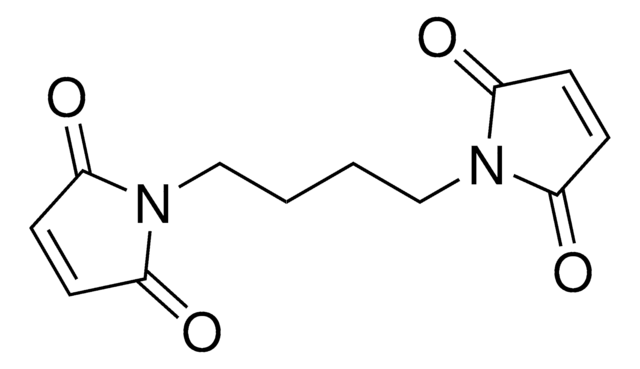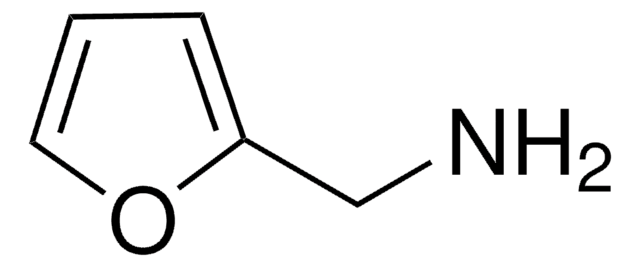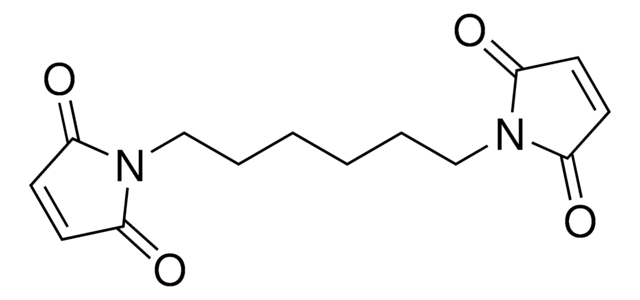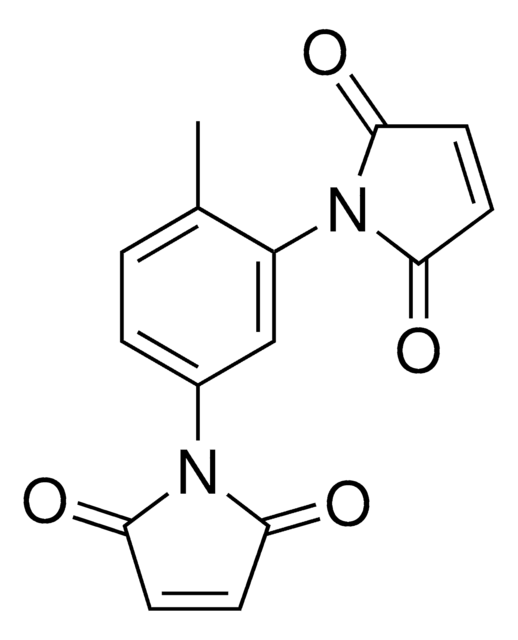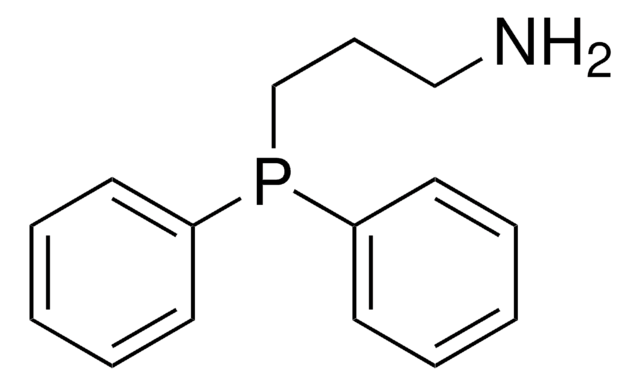803561
BMOE (bis-maleimidoethane)
Sinonimo/i:
1,1′-ethane-1,2-diylbis(1H-pyrrole-2,5-dione), N,N′-Ethylenebismaleimide, BMOE, Ethylenebismaleimide
About This Item
Prodotti consigliati
Forma fisica
powder
PM
220.18
Impiego in reazioni chimiche
reagent type: cross-linking reagent
Condizioni di stoccaggio
desiccated
Solubilità
DMSO or DMF: soluble
Condizioni di spedizione
ambient
Temperatura di conservazione
2-8°C
Stringa SMILE
O=C(C=CC1=O)N1CCN2C(C=CC2=O)=O
InChI
1S/C10H8N2O4/c13-7-1-2-8(14)11(7)5-6-12-9(15)3-4-10(12)16/h1-4H,5-6H2
PUKLCKVOVCZYKF-UHFFFAOYSA-N
Descrizione generale
Caratteristiche e vantaggi
- Reactive groups: maleimide (both ends)
- Reactive towards: sulfhydryl groups
- Short (8.0Å), sulfhydryl-to-sulfhydryl crosslinker, composed of maleimide groups and 7-atom spacer arm
- Shortest bismaleimide crosslinker available for close proximity crosslinking
- Water-insoluble—dissolve first in DMF or DMSO, then add to aqueous reaction buffers
- Noncleavable
Avvertenza
Codice della classe di stoccaggio
11 - Combustible Solids
Classe di pericolosità dell'acqua (WGK)
WGK 3
Punto d’infiammabilità (°F)
Not applicable
Punto d’infiammabilità (°C)
Not applicable
Certificati d'analisi (COA)
Cerca il Certificati d'analisi (COA) digitando il numero di lotto/batch corrispondente. I numeri di lotto o di batch sono stampati sull'etichetta dei prodotti dopo la parola ‘Lotto’ o ‘Batch’.
Possiedi già questo prodotto?
I documenti relativi ai prodotti acquistati recentemente sono disponibili nell’Archivio dei documenti.
I clienti hanno visto anche
Il team dei nostri ricercatori vanta grande esperienza in tutte le aree della ricerca quali Life Science, scienza dei materiali, sintesi chimica, cromatografia, discipline analitiche, ecc..
Contatta l'Assistenza Tecnica.
